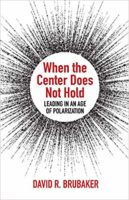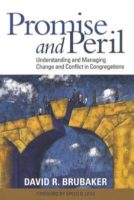By middle age, most of us realize the futility of efforts to force another person to change. Efforts to transform another human being—spouse, partner, friend, colleague, or child—generally shatter on the rocks of a simple reality: sustainable change comes from within.

For congregational leaders and consultants, this principle mandates doing change with people rather than to them. Pressure from the top or from outside may accomplish short-term adjustments, but long-term change comes from within.
For the first decade of my consulting career (1987 to 1997), I operated as a traditional congregational consultant. I would negotiate a contract and then proceed to interview dozens of members about the opportunities and challenges they envisioned in their congregation. After summarizing the interviews I would write a report and conclude with a list of recommendations to improve congregational functioning. Finally, I would prepare an invoice and send evaluation forms.
The upside of this model was that I got paid. The downside was that follow-up evaluations identified little or no change in the congregation’s functioning.
The Reference Team Model
In meeting with a group of colleagues, I realized that the traditional model of “outside expert comes in, collects data, and makes recommendations” was not producing tangible results. So we designed a “Reference Team” model, which called for the congregation or organization to form a diverse internal team as part of the consulting process. Reference Team members participated in every stage of the consulting process—information-gathering, assessment, recommendations, and implementation. The result was much higher ownership of the consulting process itself, as well as of the recommendations that resulted.
The composition of such a team is critical, and the three most critical pieces regarding its creation are as follows:
- That the Reference Team of 6 to 8 members represent the diversity of the congregation, both in terms of identity and perspectives.
- That the Reference Team be appointed by the governing board of the congregation, and that at least one member of the team be an active member of the governing board.
- That a Reference Team only be formed when the issues are system-wide and thus merit a system-wide response.
There are no guarantees in congregational work, but congregations that use a Reference Team are much more likely to implement the recommendations. A Reference Team is one of several ways to increase ownership and build change from within. Other methods include executive coaching with individuals or work with the existing leadership team. When leaders (both lay and clergy) change, congregations change.
Key Principles of Change
It is not always necessary, or even appropriate, to bring in an outside consultant or coach. Internal change agents can often lead significant change processes—particularly when they understand key principles of change, such as
- The need to earn the right to make change,
- The reality that we can’t change what we won’t name, and
- The awareness that leading change requires a team.
The principle that sustainable change comes from within applies to planned change processes—such as the annual planning and budgeting cycle or periodic strategic planning—and also to changes that impinge on a congregation from its external environment, such as global pandemic or economic recession. When the storms of change first appear, the instinct to huddle with just a few key leaders is strong. But such times are also opportunities to mobilize the broader system—to draw on the creativity and wisdom of the many rather than the few.
Sustainable change comes from within, though outsiders can help by coaching a key leader or an internal team. Internal leaders like Mahatma Gandhi and Martin Luther King can be effective change agents in their own societies, though outside efforts to force change on other countries generally fail. Closer to home, it’s a reminder that sustainable congregational change comes from within—not by importing outside experts or adopting off-the-shelf programs developed by “successful” congregations elsewhere.
Every congregation in this country is experiencing change. Your congregation may well resist some of those changes. Sustained change must be adapted—and ultimately adopted—by the congregation itself.
David Brubaker has consulted with organizations and congregations in the U.S. and a dozen other countries on organizational development and conflict transformation. He is the author of Promise and Peril, on managing change and conflict in congregations, and When the Center Does Not Hold, on leading in an age of polarization. David serves as Dean of the School of Social Sciences and Professions at Eastern Mennonite University and is a professor of organizational studies.


